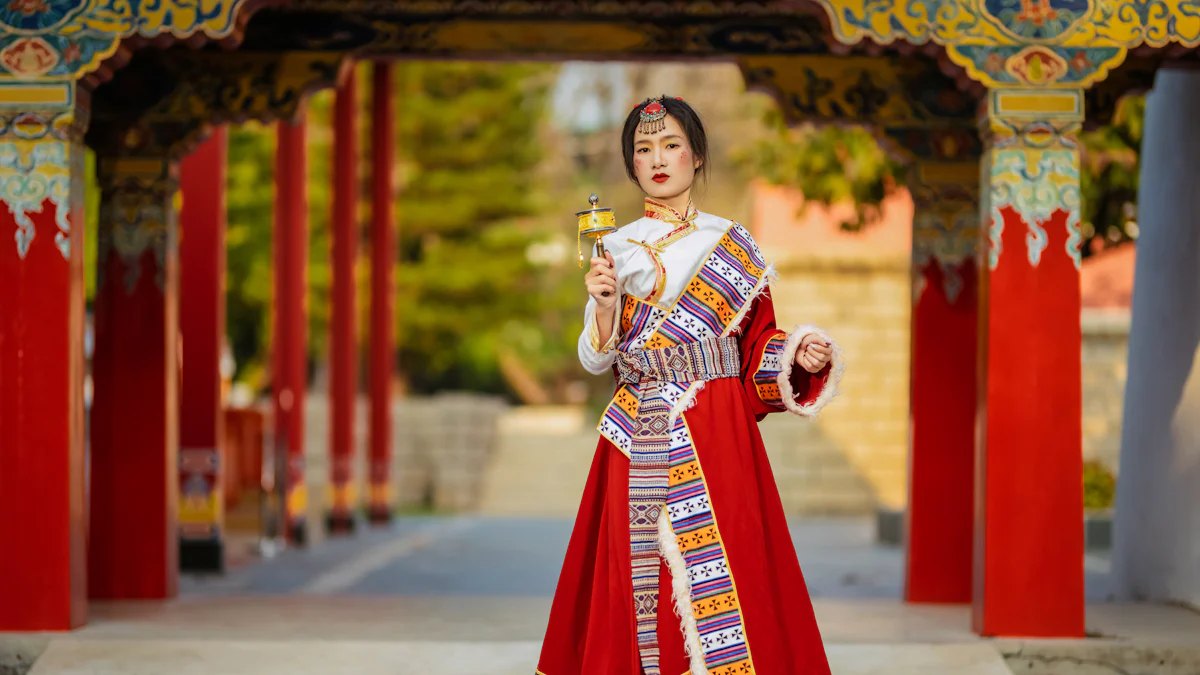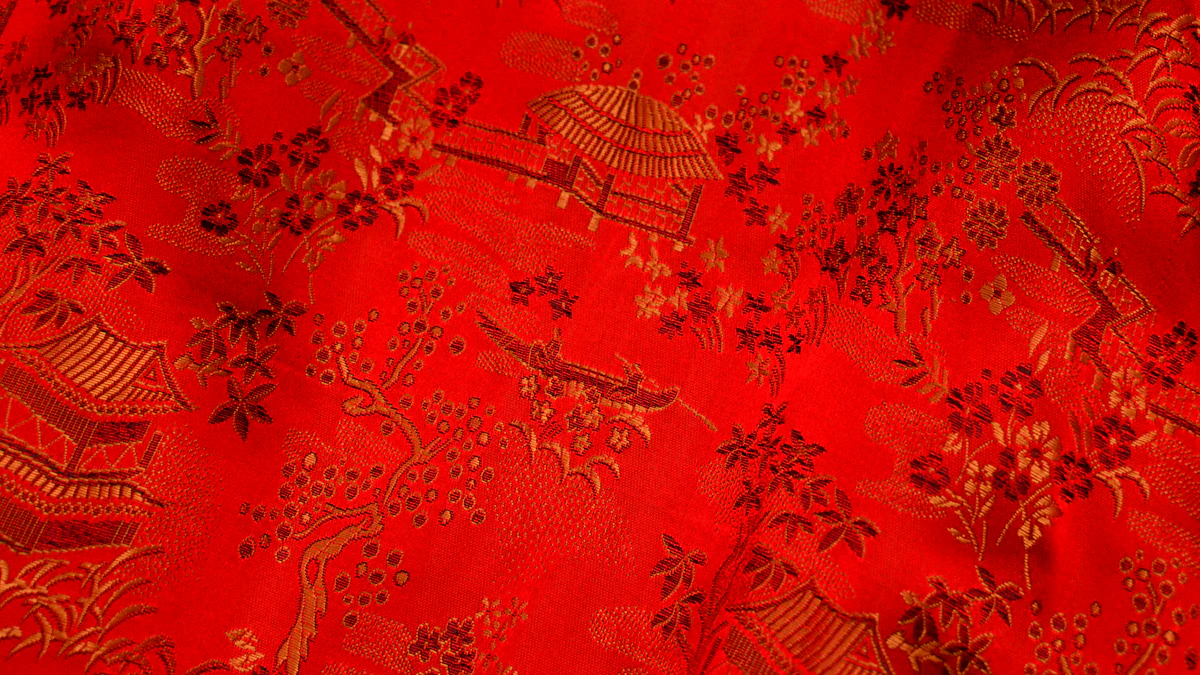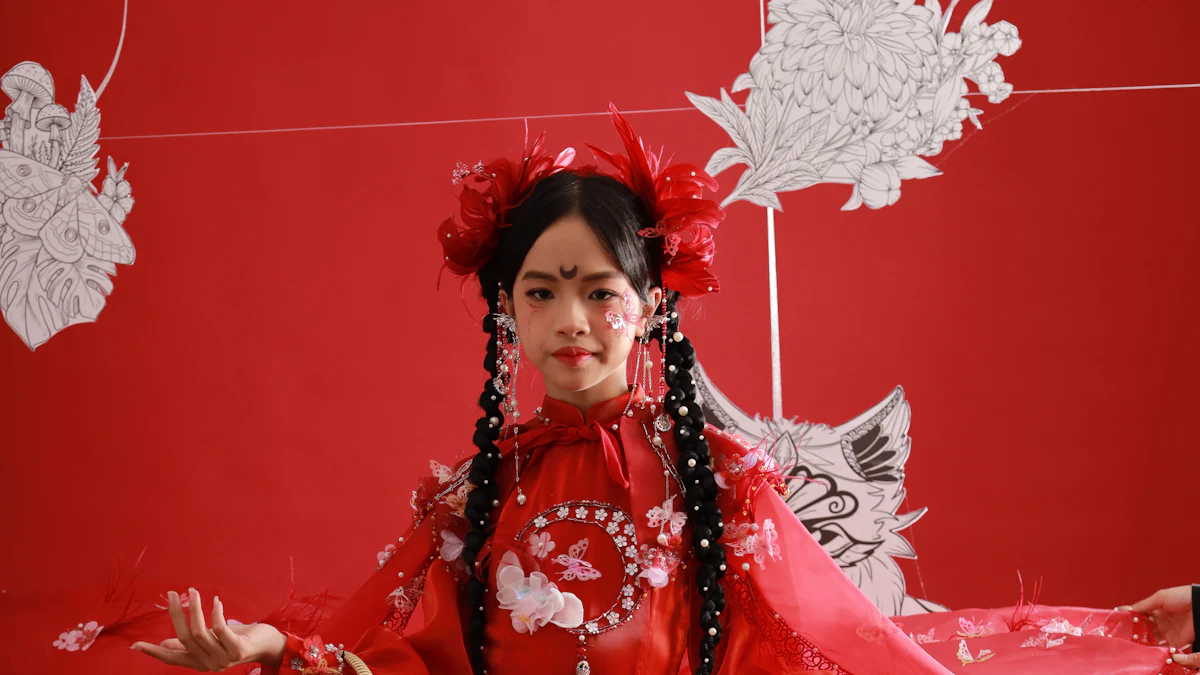
Hanfu dresses, with their rich history dating back to the 2nd millennium BCE, hold immense cultural significance for the Han Chinese. These traditional garments symbolize a deep-rooted connection to heritage and tradition, embodying a sense of pride and continuity. This blog aims to enlighten readers on the intricate art of crafting hanfu dresses, delving into the materials, techniques, and designs that make these garments truly exceptional.
Materials and Tools

To create exquisite Hanfu dresses, artisans must carefully select the finest materials and tools. Let’s explore the essential components required for crafting these traditional garments.
Essential Materials
Fabrics
- Various fabrics are utilized in crafting Hanfu dresses, each chosen for its unique qualities. From luxurious silk to durable cotton blends, the selection of fabric significantly influences the final look and feel of the garment.
- Modern Hanfu blends advanced cotton and silk fabrics, offering a functional yet elegant choice. This blend ensures durability and comfort, making it easy to care for by washing in cold water on a gentle cycle.
Threads and Needles
- High-quality threads and needles are indispensable for creating intricate designs on Hanfu dresses. Fine threads ensure strong seams, while delicate needles allow for precise stitching that enhances the overall aesthetic.
- When working with delicate fabrics like silk, using fine threads is crucial to prevent damage. Pairing them with sharp needles guarantees seamless embroidery work that elevates the beauty of the garment.
Necessary Tools
Sewing Machines
- Sewing machines expedite the dressmaking process, enabling artisans to stitch fabrics swiftly and accurately. These machines offer various stitching options, from straight stitches to decorative patterns, enhancing the versatility of design.
- Modern hanfu is designed to accommodate a fast-paced lifestyle without compromising on elegance or quality. With sewing machines, artisans can efficiently create these garments while maintaining their luxurious appeal.
Embroidery Tools
- Embroidery tools play a vital role in adding intricate details to Hanfu dresses. From traditional hand embroidery techniques to modern machine embroidery methods, these tools allow artisans to embellish garments with elaborate designs.
- The fusion of traditional craftsmanship with contemporary embroidery tools results in stunning Hanfu creations that blend cultural heritage with modern aesthetics. By embracing innovative techniques, artisans can produce unique pieces that resonate with today’s fashion trends.
Crafting Techniques
Cutting Techniques
Pattern Making
In crafting Hanfu dresses, pattern making is a crucial initial step. Artisans meticulously design and create patterns that serve as templates for cutting the fabric. By utilizing traditional methods passed down through generations, they ensure the precise shaping of each garment piece. The choice of fabric, whether luxurious silk or durable cotton blends, influences the pattern-making process.
Fabric Cutting
Fabric cutting is a meticulous process that requires skill and precision. Artisans carefully lay out the fabric according to the patterns created, ensuring minimal wastage and maximum utilization. Whether using Dupioni silk known for its slubbing effect or brocade for intricate designs, each fabric type demands specific cutting techniques. The irregular weft threads of Dupioni silk create a unique texture in Hanfu dresses, adding depth to the overall look.
Sewing Techniques
Hand Sewing
Hand sewing is an art form that adds a personal touch to Hanfu dresses. Skilled artisans use fine threads and delicate needles to hand stitch intricate details onto the garments. This meticulous process allows for greater control over the final outcome, ensuring every stitch contributes to the overall beauty of the dress. Grass cloth, often used for mourning attire, showcases the dedication and craftsmanship involved in hand sewing.
Machine Sewing
Machine sewing has revolutionized the production of Hanfu dresses, enabling artisans to create garments efficiently without compromising quality. Modern sewing machines offer various stitching options that cater to different design elements, from straight seams to decorative patterns. By integrating machine sewing techniques with traditional craftsmanship, artisans can produce exquisite Hanfu dresses that blend historical elegance with contemporary flair.
By mastering cutting and sewing techniques, artisans breathe life into Hanfu dresses, preserving cultural heritage while embracing modern innovations in dressmaking. Each stitch and cut reflects a deep-rooted connection to tradition and craftsmanship, ensuring that every Hanfu dress tells a story of timeless beauty and cultural significance.
Designing Hanfu Dresses

When it comes to Hanfu dresses, the realm of design offers a captivating journey through time, blending traditional aesthetics with modern innovations. Let’s explore the intricate artistry behind both traditional designs and contemporary adaptations that define the allure of Hanfu fashion.
Traditional Designs
Historical Inspirations
Drawing inspiration from ancient dynasties and historical narratives, Hanfu dresses embody a timeless elegance rooted in China’s rich cultural heritage. The evolution of traditional designs reflects a deep reverence for history, with each garment telling a story of bygone eras. From the graceful lines of Tang Dynasty robes to the elaborate sleeves of Ming Dynasty attire, historical inspirations breathe life into every stitch.
Cultural Elements
Cultural symbolism infuses Hanfu dresses with profound meaning, capturing the essence of Chinese traditions and values. Intricate motifs such as auspicious symbols and nature-inspired patterns adorn these garments, reflecting a harmonious relationship between humanity and the natural world. The use of vibrant colors symbolizes prosperity and joy, while intricate embroidery techniques pay homage to artisanal craftsmanship passed down through generations.
Modern Adaptations
Contemporary Styles
Innovative designers have reimagined Hanfu dresses for the modern era, infusing them with contemporary flair while preserving their cultural essence. By incorporating sleek silhouettes and minimalist details, contemporary styles offer a fresh take on traditional aesthetics. The fusion of past and present creates a harmonious balance between heritage and modernity, appealing to a new generation of fashion enthusiasts.
Fusion Designs
The intersection of East and West gives rise to fusion designs that push the boundaries of conventional fashion norms. By blending elements of Western couture with traditional Chinese silhouettes, designers create eclectic pieces that transcend cultural boundaries. These avant-garde creations celebrate diversity and creativity, offering a unique perspective on cross-cultural exchange in the world of fashion.
Crafting Hanfu dresses involves a meticulous process of selecting materials, mastering cutting and sewing techniques, and embracing traditional designs. The artistry behind each stitch and pattern reflects a deep-rooted connection to Chinese heritage and cultural pride. Preserving the craftsmanship of Hanfu dress-making is essential in honoring centuries of tradition and promoting cultural continuity. By exploring and appreciating the beauty of Hanfu dresses, individuals can not only showcase their cultural confidence but also celebrate the rich history and artistry embedded in these exquisite garments.






